Table of Contents
Remembering Coleman Hawkins (1904-1969)
Coleman Randolph Hawkins (November 21, 1904 – May 19, 1969), nicknamed “Hawk” and sometimes “Bean”, was an American jazz tenor saxophonist.
One of the first prominent jazz musicians on his instrument, as Joachim E. Berendt explained: “there were some tenor players before him, but the instrument was not an acknowledged jazz horn”.
Coleman Hawkins biographer John Chilton described the prevalent styles of tenor saxophone solos prior to Hawkins as “mooing” and “rubbery belches”.
Best Sheet Music download from our Library.
Coleman Hawkins denied being first and noted his contemporaries Happy Caldwell, Stump Evans, and Prince Robinson, although he was the first to tailor his method of improvisation to the saxophone rather than imitate the techniques of the clarinet. Hawkins’ virtuosic, arpeggiated approach to improvisation, with his characteristic rich, emotional, and vibrato-laden tonal style, was the main influence on a generation of tenor players that included Chu Berry, Charlie Barnet, Tex Beneke, Ben Webster, Vido Musso, Herschel Evans, Buddy Tate, and Don Byas, and through them the later tenormen, Arnett Cobb, Illinois Jacquet, Flip Phillips, Ike Quebec, Al Sears, Paul Gonsalves, and Lucky Thompson. While Hawkins became known with swing music during the big band era, he had a role in the development of bebop in the 1940s.
Please, subscribe to our Library.
If you are already a subscriber, please, check our NEW SCORES’ page every month for new sheet music. THANK YOU!
Fellow saxophonist Lester Young, known as the “President of the Tenor Saxophone”, commented, in a 1959 interview with The Jazz Review: “As far as I’m concerned, I think Coleman Hawkins was the president, first, right? As far as myself, I think I’m the second one.” Miles Davis once said: “When I heard Hawk, I learned to play ballads.”

The first and most fundamental chapters in the history of the tenor saxophone in jazz were written by Coleman Hawkins (San Jose, Missouri, November 21, 1904 – New York, May 19, 1969). This was the result of a long and painstaking evolution of an instrument that was perfectly adapted to the musical language of jazz. His family was from a wealthy class and he began studying piano as a child.
At the age of seven he studied the cello and at the age of nine he began to learn to play the tenor sax, an instrument that was not used in jazz at the time and that in commercial orchestras was played with a technique that was too reminiscent of that of circus musicians. At that time he began studying classical music at Washburn College in Kansas City, which he completed in Chicago, the city to which he moved with his family in 1919 and where he had the opportunity to hear jazz for the first time.

He made his professional debut in 1920 in an orchestra in the Kansas City region, and the following year he was hired by the famous blues singer, Mamie Smith, who used to have in her group musicians of the highest quality such as Buster Bailey, Sydney Bechet, or Bubber Miley. . With it he will arrive in New York and record his first album and begins to become known in the jazz circles of the Big Apple. In 1923, he joined Fletcher Henderson’s orchestra, which with him in its ranks and the incorporation the following year of a very young man, Louis Armstrong, would become the first big band in history and in which Hawkins would remain for eleven long and magnificent years until making that orchestra the best of its time.

In 1934, Coleman Hawkins left Henderson’s band and went to Europe and in England signed a juicy contract with Jack Hylton’s orchestra. He was expelled from Nazi Germany because of the color of his skin and confined himself first to Holland and then to France, recording albums in Paris with local musicians and coinciding with his friend Benny Carter, who had also traveled to old Europe. In 1939 he returned to the United States where he found that his old disciples were making a big splash in the jazz scene and where he met for the first time a saxophonist from Kansas who began to overshadow him. His name was Lester Young and he stood out among other saxophonists, for putting into practice a style different from his own for the first time in twenty years. Hawkins put together his own orchestra and recorded the historic song: “Body and Soul”, one of the great jazz standards since then and which will mean his definitive consecration as one of the great creators of jazz. From that moment on, he began to be known as the “father of the tenor saxophone.”

He dissolved his big band in 1941 and worked with smaller groups. In the second half of the 1940s, he would be one of the stars of “Jazz at the Philharmonic”, the musical organization created by Norman Granz, which would be in charge of bringing jazz to all corners of the world. Among his records, the collaboration with Roy Eldridge and Oscar Peterson stands out in the fifties and he recorded some extraordinary albums such as those titled:
“The Genius of Coleman Hawkins” (Verve 1957) or the splendid “High and Mighty Hawk” also for Verve in 1958. In 1962 he recorded a memorable album with Duke Ellington”: “Duke Ellington meets Coleman Hawkins” (Impulse!) and in 1966, He recorded the last album of his life “Sirius” (Pablo) because from that date his health began to play tricks on him and he died three years later, a victim of pneumonia, on May 19, 1969 at the Wickersham Hospital in New York.
With him disappeared the man who was to the tenor saxophone, what Louis Armstrong was to the trumpet: the inventor of the first and, therefore, most important musical-instrumental rules, which would determine the configuration, concept and language of the tenor saxophone in the jazz of all times.

Coleman Hawkins – Body & Soul
“Body and Soul”, by Coleman Hawkins.
Coleman Hawkins was the first great tenor saxophonist in the history of jazz. Considered the “father” of the tenor saxophone in jazz, his stay in Fletcher Henderson’s orchestra, between 1924 and 1925, and above all the influence of his most prominent soloist, the trumpeter, Louis Armstrong, turned him into a prodigious soloist. capable of developing phrasings on his instrument with an agility and fluidity that seemed, in years before his appearance, a pure chimera.
The selection of recordings collected on this album cover twenty years of his career (1939-1959), those that are considered fundamental in the life of this jazz master. Before, he had already established himself as a professor with his solos in Fletcher’s orchestra, maturing his style, polishing and perfecting an unusual and unique way of playing the tenor saxophone, gradually gaining cleanliness, sonority, power and a unique timbre. “Body and Soul” therefore begins in the historic session of October 11, 1939, when he recorded what is considered his masterpiece and without a doubt, one of the jewels in the history of jazz: “Body and Soul”
Coleman Hawkins recorded “Body and Soul” a few months after his return to the United States after his traveling tour of Europe. In three minutes – the three most glorious minutes in the history of jazz, according to some critics – and during two choruses directly improvised in mid-tempo on the original melody, Hawkins, overflowing with lyricism and with a more contained sonority, literally reinvents it with some variations that can only be described as brilliant for their coherence and sense of meter. “Body and Soul” is the best sense of the word, a perfect tenor sax solo that revolutionized at that time, and in that era, the concept and language of the instrument. Since then, there are few saxophonists who have not learned it by heart.
The rest of the album are several recording sessions until 1959. In them, Coleman Hawkins definitively reached his maturity and allowed him to confront the new times of jazz and the new sounds of bebop with complete guarantee. He even went further, hiring into his groups some musicians who over time would become the main figures of modern jazz.
| THE MUSICIANS | THE INSTRUMENTS | TECHNICAL SHEET |
| Navarro facts | trumpet | Record label: RCA-BLUEBIRD |
| Benny Carter | alto sax | Serial number: RCA-4178 |
| Milt Hinton | Double bass | Recording date: 1939-1956 |
| Jay Jay Johnson | Trombon | Recording location: New York |
| Zoot Sims | tenor sax | Rating: 5* out of 5 |
| Hank Jones | Piano | |
| Max Roach | Battery | |
| Coleman Hawkins | Tenor sax and leader |
Browse in the Library:
| Artist or Composer / Score name | Cover | List of Contents |
|---|---|---|
| Waltz In E Minor Op. 39 No. 4 – Johannes Brahms (Musescore File).mscz | ||
| Ward-Jackson’s Gymnastics For The Fingers And Wrist – based On Anatomical Principles (By Edwin Ward-Jackson) 1874 |
 |
|
| Watermark (Musescore File).mscz | ||
| Watermelon Man (Musescore File).mscz | ||
| Waters of Irrawaddy (Hans Zimmer) from the movie Beyond Rangoon | ||
| Wave – Vou Te Contar Jobim (Musescore File).mscz | ||
| Wayne Shorter – Ana Maria |
 |
|
| Wayne Shorter Artist Transcriptions The New Best of |
 |
Wayne Shorter Artist Transcriptions The New Best of |
| Wayward Sisters – Nocturnal Animals OST (Abel Korzeniowski) | ||
| We are the champions (Queen) | ||
| We Are The World Songbook |
 |
we are the world |
| We Shall Overcome Essays on a Great American Song (Book) by Victor B.Bobetsky |
 |
|
| We Wish You A Merry Christmas | ||
| We Wish You A Merry Christmas – Anonymous (Guitar arr. sheet music with TABs) | We Wish You A Merry Christmas – Anonymous (Guitar arr. sheet music with TABs) | |
| We Wish You A Merry Christmas – Guitar TABlature |
 |
|
| We Wish You A Merry Christmas (piano solo sheet music) |
 |
|
| We Wish You A Merry Christmas Trad. English Christmas carol |
 |
|
| We Wish You A Merry Christmas Trad. English Christmas carol.mscz | ||
| Weather Report – A Remark You Made (Guitar TABS) | Weather Report – A Remark You Made (Guitar TABS) | |
| Weather Report – The best of Weather Report (Full score) |
 |
Weather Report – The best of Weather Report (Full score) |
| Weber – Der Freischütz (Ouvertüre) Piano Solo arr |
 |
|
| Weber – Der Freischütz (Ouvertüre) Piano Solo arr.mscz | ||
| Weber – Der Freischutz Overture piano solo arr. |
 |
|
| Weber op 65 Invitation to the Dance (Invitation to the Waltz) | ||
| Weber’s Last Thought – C.M. von Weber |
 |
|
| Wedding Collection for Piano Solo |
 |
Wedding Collection for Piano Solo |
| Wednesday Morning 3 A M – Simon & Garfunkel (Musescore File).mscz | ||
| Weight Of The World – Nier Automata Piano Collections (Musescore File).mscz | ||
| Weissenberg En Avril A Paris (April In Paris) Charles Trenet |
 |
|
| Well Tempered Praise – Mark Hayes piano |
 |
Well Tempered Praise – Mark Hayes piano |
| Well Tempered Praise II by Mark Hayes |
 |
Well Tempered Praise II by Mark Hayes |
| Well Tempered Praise III – Mark Hayes piano |
 |
Well Tempered Praise III – Mark Hayes piano |
| Well Tempered Praise Vol 4 Gospel Classics by Mark Hayes |
 |
Well Tempered Praise Vol 4 Gospel Classics by Mark Hayes |
| Well-Known Piano Solos – How To Play Them (By Charles W Wilkinson) (1915) |
 |
|
| Wes Montgomery Wine And Roses By Henry Mancini Solo Guitar |
 |
|
| Wes Montgomery – Unit 7 Solo Transcription | Wes Montgomery – Unit 7 Solo Transcription | |
| Wes Montgomery – Artist Transcriptions for guitar by fred Sokolow |
 |
Wes Montgomery – Artist Transcriptions for guitar by fred Sokolow |
| Wes Montgomery – Au Privave transcription |
 |
|
| Wes Montgomery – Days of wine and roses transcription |
 |
|
| Wes Montgomery – Take The A Train transcription |
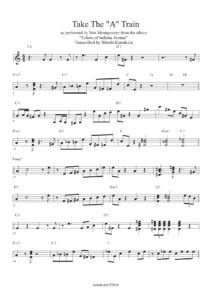 |
|
| Wes Montgomery Essential Jazz Lines (Mel Bay) |
 |
Wes Montgomery Essential Jazz Lines (Mel Bay) |
| Wes Montgomery Jazz Guitar Artistry arr. by Zafar Soood with TABs |
 |
Wes Montgomery Jazz Guitar Artistry arr. by Zafar Soood |
| Wes Montgomery Jazz No Blues Guitar |
 |
|
| Wes Montgomery The Early Years (Mel Bay) Jazz Guitar Solos Tablature |
 |
Wes Montgomery The Early Years (Mel Bay) Jazz Guitar Solos Tablature |
| Wes Montgomery The End Of A Love Affair Guitar Tabs |
 |
|
| West Side Story – Somewhere (Voice and Piano) Leonard Bernstein | West Side Story – Somewhere | |
| West Side Story (The Musical) Vocal Score Arthur Laurents, Leonard Bernstein, Stephen Sondheim |
 |
West Side Story Vocal Score – Leonard Bernstein |
| Westlife – Cant Lose What You Never Had | ||
| Westlife – Flying Without Wings | ||
| Westlife – If I Let You Go | ||
| Westlife – Mandy | ||
| Westlife – You Raise Me Up Guitar arr. with TABs | Westlife – You Raise Me Up Guitar arr. with TABs | |
| Westlife Unbreakable Greatest Hits |
 |
 |
| Wet Wet Wet – Love Is All Around | ||
| Wexford Carol (Musescore File).mscz | ||
| Wham , George Michael And Me By Andrew Ridgeley (Book) |
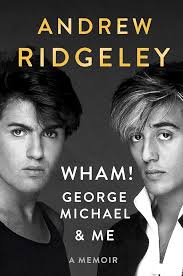 |
|
| Wham Make It Big Piano Vocal Guitar Chords |
 |
Wham Make It Big Piano Vocal Guitar Chords |
| What a Wonderful World – Thiele & Weiss |
 |
|
| What a wonderful world – Louis Armstrong.mscz | ||
| What A Wonderful World (Lead Sheet With Lyrics ) Musescore File.mscz | ||
| What a Wonderful World (lead sheet) – Thiele & Weiss | What a Wonderful World (lead sheet) – Thiele & Weiss | |
| What A Wonderful World (Musescore File).mscz | ||
| What a wonderfull World (Jazz Standard) Guitar Tablature TABs | What a wonderfull World (Jazz Standard) Guitar Tablature TABs | |
| What A Wonderlful World (Lead Sheet) (Musescore File).mscz | ||
| What You’re Made Of – Même Si (Lucie Silvas – Grégory Lemarchal | ||
| What’s That Sound An Introduction To Rock And Its History By John Covach And Andrew Flory (Book) |
 |
|
| When A Man Loves A Woman Calvin Lewis & Andrew Wright |
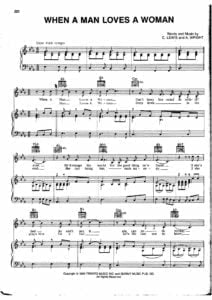 |
|
| When Almonds Blossomed – Giya Kancheli | When Almonds Blossomed – Giya Kancheli-1 | |
| When Almonds Blossomed (Musescore File).mscz | ||
| When I Fall In Love – Victor Young (Bill Evans Ver.) (Musescore File).mscz | ||
| When I fall in love Bill Evans version | When I fall in love Bill Evans version | |
| When I’m Sixty-Four (Beatles) | ||
| When Lights Are Low (Benny Carter) As Played By Miles Davis (Musescore File).mscz | ||
| When The Saints Go Marchin In – Gospel Traditional Folk song (Piano solo with Lyrics) | When The Saints Go Marchin In – Gospel Traditional Folk song (Piano solo with Lyrics) SAMPLE | |
| When The Saints Go Marching In – Fun piano arrangement | When The Saints Go Marching In – Fun piano arrangement | |
| When you told me you loved me (Jessica Simpson) | ||
| When You Wish Upon A Star (Musescore File).mscz | ||
| When You Wish Upon A Star (From The Film Pinocchio) Easy Piano Solo Arr. Sheet Music (Musescore File).mscz | ||
| When You Wish Upon A Star (Leigh Harline and Ned Washington) from Pinocchio Jazz Piano Solo arr. sheet music | When You Wish Upon A Star (Leigh Harline and Ned Washington) from Pinocchio Jazz Piano Solo arr. sheet music | |
| When You Wish Upon A Star (Solo Piano Arr ) David Dinh |
 |
|
| When You’re Gone (Avril Lavigne) | ||
| When You’re Smilling (Musescore File).mscz | ||
| Where have all the-flowers gone (guitar & voice) | Where-have-all-the-flowers-gone (guitar & voice) | |
| While your lips are still red (Nightwish) | ||
| Whistling away the dark (Darling Lili OST) Henry Mancini | ||
| White Album 2 Ending 3 Sayonara No Koto |
 |
|
| White Christmas -Irving Berlin – Piano sheet music |
 |
|
| White Christmas Irving Berlin (Musescore File).mscz | ||
| White Christmas Medley (Liberace) | ||
| White skin like the moon (Jane Eyre 2011 OST) Dario Marianelli | ||
| Whitesnake – Here I Go Again |
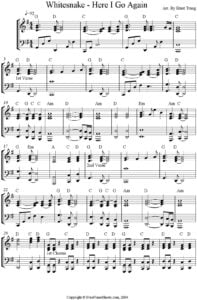 |
|
| Whitesnake Guitar Collection with TABs |
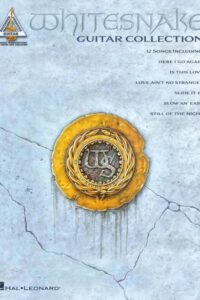 |
Whitesnake Guitar Collection with TABs |
| Whitesnake Is This Love Piano Vocal Guitar Chords | Whitesnake Is This Love Piano Vocal Guitar Chords | |
| Whitney Houston – Jesus Loves Me Sheet Music |
 |
|
| Whitney Houston The Best Of |
 |
Whitney Houston, The Best Of |
| Whitney Houston – I Will Always Love You | ||
| Whitney Houston – It’s Easy To Play Whitney Houston |
 |
Whitney Houston – It’s Easy To Play Whitney Houston |
| Whitney Houston – Saving All My Love For You | ||
| Whitney Houston – The Greatest Hits |
 |
Whitney – The Greatest Hits |
| Whitney Houston – The Greatest Love Of All | ||
| Whitney Houston I will always love you | Whitney Houston – I Will Always Love You | |
| Whitney Houston My Love Is Your Love |
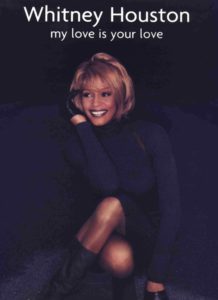 |
Whitney Houston My Love Is Your Love |
| Who wants to live forever (Queen) | ||
| Whole New World Sheet Music, A – Alan Menken |
 |
|
| Why Jazz? A Concise Guide – Kevin Whitehead (book) |
 |
|
| Wicked The Musical Sheet Music Full song Book Music and lyrics by Stephen Schwartz |
 |
Wicked the musical contents — Wicked The Musical Sheet Music Full Book |
| Wieck – Piano Studies | ||
| Wiklund Adolf Fran Mitt Fonster (From my Window) Piano Solo |
 |
|
| Wild – Fantasy On Gershwin’s Porgy And Bess | Wild Fantasy On Gershwin’s Porgy And Bess | |
| Wild Gershwin Seven Virtuoso Etudes | Wild Gershwin Seven Virtuoso Etudes | |
| Wild, Earl – Gershwin Étude No. 4 based on Embraceable You Piano | Wild, Earl – Gershwin Etude No. 4 based on Embraceable You Piano | |
| Wilde Theme (Debbie Wiseman) | ||
| Wilhelm Kempff Musik Des Barock Und Rokoko – Nr. 13 Menuett G-Moll G.F. Händel (Musescore File).mscz | ||
| Will B. Morrison – Melody in F (Syncopated Waltz) sheet music |
 |
|
| Will Young – Anything Is Possible | ||
| William Best I Love You For Sentimental Reasons (Jazz Standard) | William Best I Love You For Sentimental Reasons (Jazz Standard) | |
| William Eveleth – Blues Jazz and Rock Riffs For Keyboards |
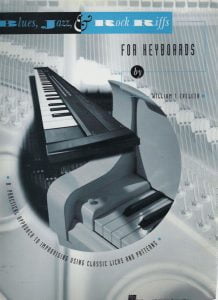 |
|
| William Gillock In Old Vienna Musescore File.mscz | ||
| William Gillock Valse Etude In Romantic Style Musescore File.mscz | ||
| William Joseph – Within (Songbook) (William Joseph) |
 |
William Joseph – Within (Songbook) (William Joseph) |
